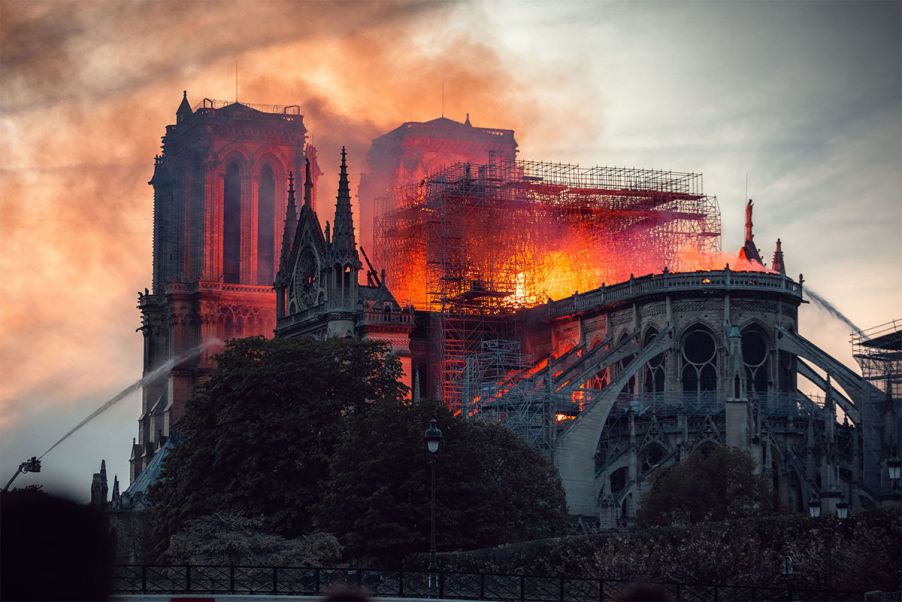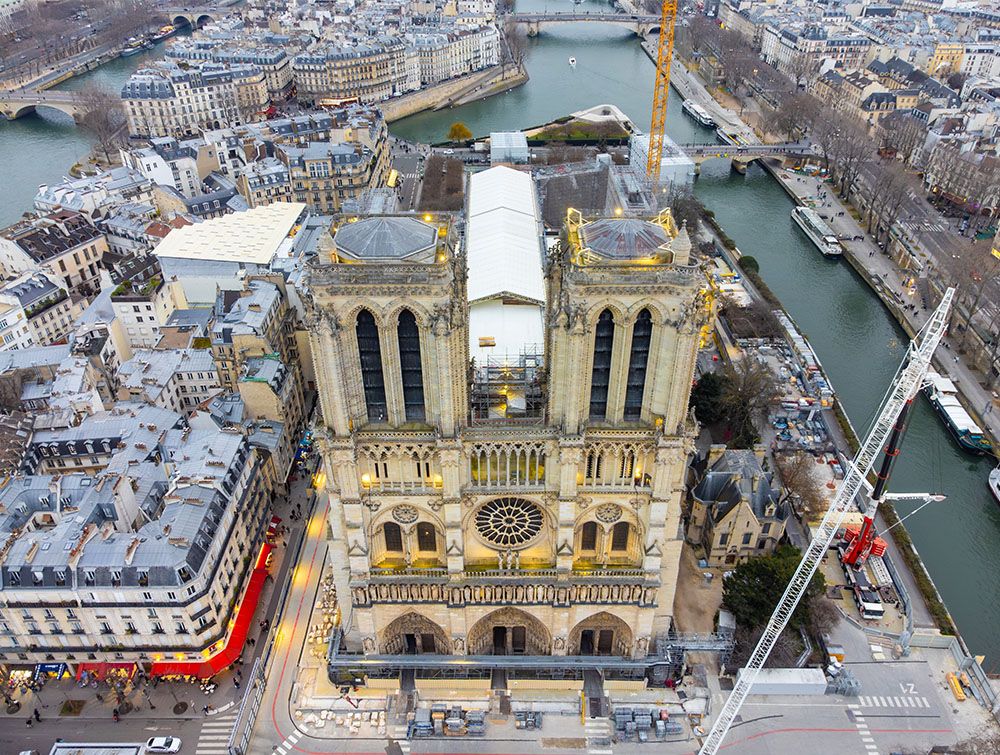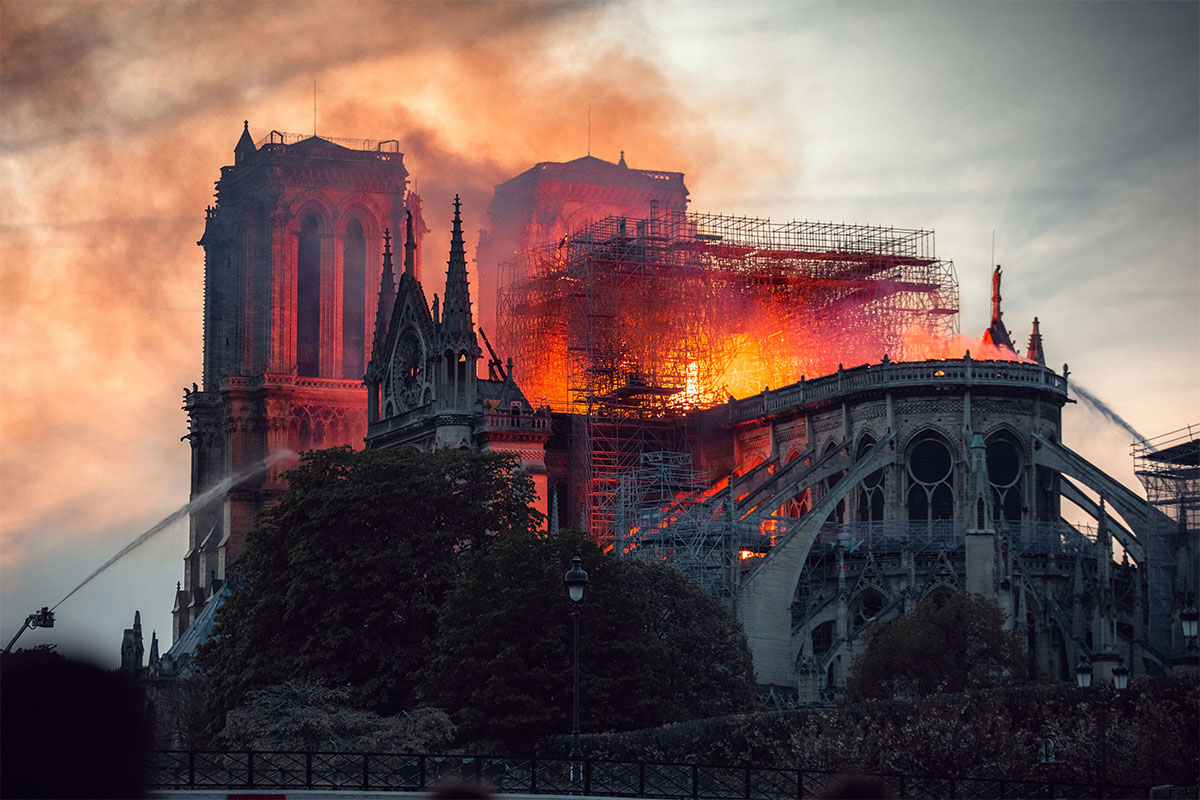The following account of the efforts to restore the Notre-Dame de Paris Cathedral is based on the article “Notre-Dame de Paris―la pierre des voûtes auscultée,” which appeared in Issue No. 78 of Controls Essais Mesures (CEM) magazine (translated from French).
The Notre-Dame Cathedral Is Burning: A Fire That Shocked the World
On April 15, 2019, a devastating fire ravaged Notre-Dame de Paris, leaving behind profound scars. While the iconic cathedral remained standing, its structural integrity came into question. In the aftermath of the tragedy, Jean-Christophe Mindeguia, a researcher from the University of Bordeaux, embarked on a mission to assess the residual stability of the cathedral's stone vaults.
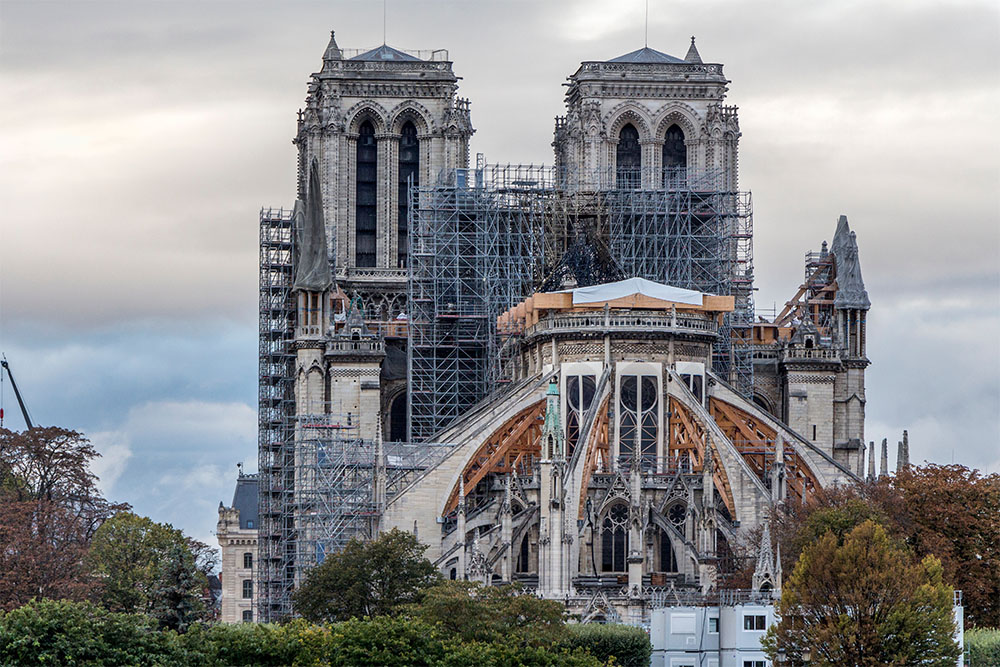
Collaborative Efforts for Reconstruction
In collaboration with the Ministry of Culture and the CNRS (French National Centre for Scientific Research), a team of researchers, led by Jean-Christophe Mindeguia, undertook the task of examining the stone vaults to assist in the monument's reconstruction. Describing the team’s mission and the answers they were seeking, Jean-Christophe explains, “What is the current condition of the cathedral? What are the suitable reinforcement techniques? Where can these be applied? We were attempting to provide answers to these questions within the framework of the cathedral's reconstruction.”
Examining the Composition and Condition of the Vaults
The cathedral’s vaults are predominantly composed of stone and mortar joints. While the University of Bordeaux focused on studying the mechanical state of the stone, the Jean Lamour Institute at the University of Lorraine concentrated on the mortar. Jean-Christophe elaborates, “The vaults are mainly composed of two materials: stone and mortar joints. We are interested in the mechanical state of the stone and the stone-joint assembly, with the Jean Lamour Institute working on the mortar.”
Seeking Deeper Insights in Exploring the Vaults
To gain deeper insights into the stone’s condition, Jean-Christophe Mindeguia conducted core drillings in the choir vault in July 2021. Describing the process, Jean-Christophe explains, “The effect of the heat on the vaults can be observed on the surface. However, we wanted to see inside the material. We carried out six core drillings in the choir vault – it had been unaffected by falling objects, but its structure was deformed following the fire. The analysis of these samples allowed us to estimate the temperature reached by the stone. We also noticed that the cores came out in several pieces, so we questioned whether the coring process caused this detachment or were there cracks already present. I contacted Evident about a videoscope to obtain images inside the holes left by the cores. The holes are about fifteen centimeters deep and three centimeters in diameter.”

Utilizing Advanced RVI Technology: Our IPLEX NX Video Borescope
To visualize the interior of the drill holes and locate cracks accurately, the team employed the IPLEX™ NX video borescope. Jean-Christophe describes the utility of using video borescope inspection technology, stating, “With the naked eye, only the first few centimeters of the hole were visible from the opening. The videoscope gave us an ’eye on the inside.’ It’s compact, which enabled us to navigate through a forest of scaffolding with it. The videoscope offered us the possibility to visualize the inside of the core drill holes on a remote screen.”
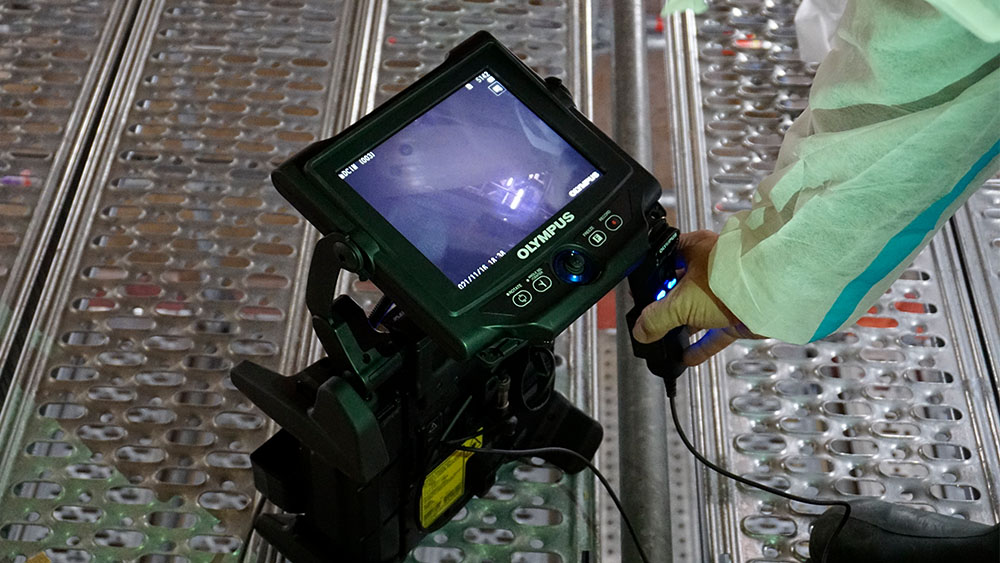
Progress on the Road to Restoration
Through collaborative efforts and advanced technology, Jean-Christophe Mindeguia and other researchers are making significant strides in assessing the structural integrity of Notre-Dame de Paris. With ongoing modeling of the vaults using collected data, these efforts represent a crucial step toward the cathedral’s restoration and preservation for future generations.
To learn more about our IPLEX series, visit www.olympus-ims.com/remote-visual-inspection/videoscope/
Read about some other interesting applications of our video borescopes at the links below.
Related Content
5 Traits a Videoscope Needs to Stand Up to the Rigors of Search and Rescue Operations
